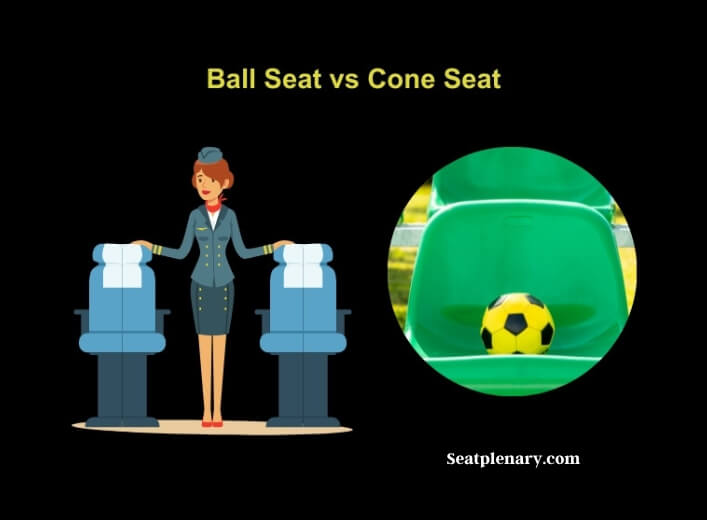Ah, the age-old question that has puzzled automotive enthusiasts for years: ball seat vs cone seat lug nuts – which is the better option for your ride? With so many factors to consider, it’s essential to understand the key differences between the two types to make the most informed decision for your vehicle. In this article, we’ll dive into the world of lug nuts, explore the pros and cons of both ball seat and cone seat options, and answer some frequently asked questions. So, buckle up and let’s get this show on the road!

Ball Seat vs Cone Seat: The Basics
First and foremost, let’s break down the fundamental differences between ball seat and cone seat lug nuts.
Ball Seat Lug Nuts
- Designed with a rounded, ball-shaped seating surface
- Commonly used on factory wheels, particularly for European vehicles
- Offers a secure, snug fit on the wheel’s mounting surface
- Requires a specific type of wheel to ensure proper fitment
Cone Seat Lug Nuts
- Features a tapered, cone-shaped seating surface
- Popular choice for aftermarket wheels, especially among American and Asian vehicles
- Provides a self-centering function for better alignment
- More versatile, as they can accommodate a wider variety of wheels
Pros and Cons: Ball Seat vs Cone Seat Lug Nuts
Now that we’ve established the core differences between ball seat and cone seat lug nuts, let’s weigh the pros and cons of each type.
Ball Seat: The Good and the Bad
Pros:
- Precise fit: Ball seat lug nuts ensure a snug and secure fit on the wheel’s mounting surface.
- OEM compatibility: They are often the go-to choice for factory wheels, particularly in European vehicles.
Cons:
- Limited wheel compatibility: Ball seat lug nuts require a specific type of wheel, which can limit your options when selecting aftermarket wheels.
- Incompatibility risk: Using ball seat lug nuts with incompatible wheels can result in damage or even wheel separation.
Cone Seat: The Ups and Downs
Pros:
- Versatility: Cone seat lug nuts are compatible with a wider range of wheels, making them an excellent choice for aftermarket setups.
- Self-centering: The cone shape provides a self-centering function that can lead to better alignment.
Cons:
- Less precision: The fit of cone seat lug nuts may be less precise than their ball seat counterparts.
- Potential for overtightening: The tapered design can sometimes lead to overtightening and damage to the wheel or lug nut.
Frequently Asked Questions: Ball Seat vs Cone Seat Lug Nuts
How do I know which type of lug nut is right for my vehicle?
The best way to determine the appropriate lug nut for your vehicle is to consult your owner’s manual or contact the wheel manufacturer. They can provide specific information on the recommended lug nut type for your make and model.
Can I mix and match ball seat and cone seat lug nuts on the same wheel?
Mixing lug nut types on the same wheel is a big no-no! Doing so can lead to uneven clamping forces, causing damage to your wheels and even potential wheel separation.
Are there any safety concerns when choosing between ball seat and cone seat lug nuts?
The primary safety concern lies in using the incorrect lug nut for your wheel type. Always ensure you have the proper lug nut for your specific wheel to avoid any safety hazards. If you’re unsure, consult a professional mechanic or your wheel manufacturer for guidance.
Is one type of lug nut more durable than the other?
Both ball seat and cone seat lug nuts can offer excellent durability when used with their respective wheel types. The key to longevity is proper installation and routine maintenance checks.
Can I use aftermarket lug nuts with my factory wheels?
Aftermarket lug nuts can be used with factory wheels, provided they are the correct type for your specific wheel. It’s crucial to verify the compatibility before making any changes.
Making the Right Choice: Ball Seat vs Cone Seat Lug Nuts
When it comes down to choosing between ball seat and cone seat lug nuts, the most important factor is compatibility with your vehicle’s wheels. Keep these considerations in mind when making your decision:
- Consult your owner’s manual or the wheel manufacturer for the recommended lug nut type.
- Verify compatibility with your specific wheel design, especially if you’re considering aftermarket wheels.
- Remember that mixing lug nut types on the same wheel is a recipe for disaster.
Wrap Up
The battle between ball seat and cone seat lug nuts ultimately boils down to your vehicle’s wheel type and your personal preferences. By understanding the fundamental differences and carefully considering the pros and cons, you can confidently choose the right lug nut for your ride. When in doubt, always seek professional advice from a mechanic or wheel manufacturer to ensure a safe and secure fit. After all, it’s better to be safe than sorry when it comes to your vehicle’s safety and performance. Happy motoring!
You might also like:
